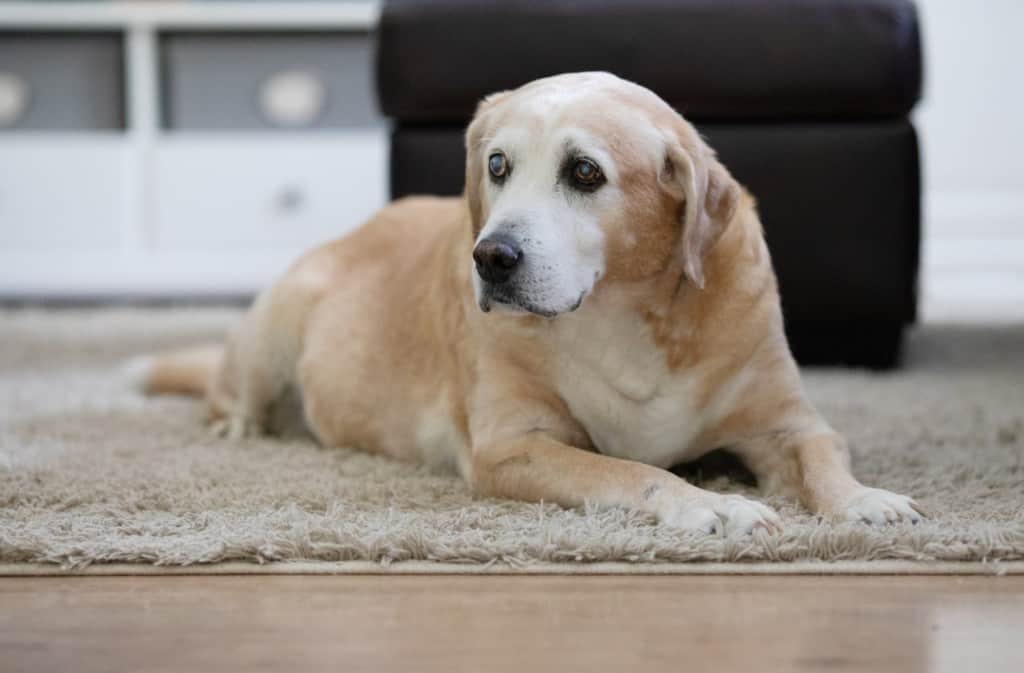
Vet Buzz from Erin Troy, DVM, CCRP,
Muller Veterinary Hospital, Walnut Creek, CA
Osteoarthritis (OA), or Degenerative Joint Disease (DJD), affects 1 out of 5 dogs in the United States. This is not a breed selective disease but one that can affect all dogs, including both genders and all sizes. Our goal of therapy is to maintain or improve each patient’s quality of life through a multimodal treatment approach. Early diagnosis leads to early intervention but achieving a diagnosis is often the biggest hurdle. Many dog owners feel that it is expected that their older dog will “slow down” with age. However, this may be an early indicator of OA. An accurate diagnosis is essential for effective treatment. A physical examination and X-rays will achieve a diagnosis and lead you and your veterinarian into the discussion of all the treatment options currently available.
Pulsed Signal Therapy is a patented cutting edge treatment of OA that is noninvasive, painless and without any reported side effects. This technology was developed by a European Biophysicist and MD. The initial double- blinded placebo controlled study showed more than 70% of treated patients demonstrated a significant improvement. PST mimics the normal physiological signals transmitted into the joint to promote normal repair of damaged cartilage and other joint structures. This can relieve the severity of joint pain, improve mobility and restore the activities of comfortable daily life. PST can be used in conjunction with other treatment choices or as an ideal option for dogs that are not candidates for traditional medications. Currently PST is approved for use only in animals in the US but has been used on people and animals for years in Europe. For more information please visit www.pstvet.com.
One of the most successful but challenging treatment options for dogs with OA is weight management. Excess weight puts a significant strain on joints and can decrease your dog’s ability to exercise. Dogs with OA should be on the slender side to increase their comfort with daily activities. This is a noninvasive option with no side effects and it can actually save you money! Please check with your veterinarian for an appropriate weight loss program and to help set a reasonable goal weight for your dog.
Low impact exercises can help slow the progression of OA by equipping your dog with better muscle control and increased range of motion. Aerobic activities, such as walking or jogging, aid in improved function. Try to minimize hard impact on joints by assisting your dog out of vehicles or off of tall furniture. Strength training in a buoyant environment, such as an underwater treadmill, can allow exercise with less stress on affected joints. You can learn body specific exercises to help increase strength where your dog needs it most. Don’t let your arthritic dog turn into a couch potato.
The medical management of OA is far reaching in its scope. Medications range from prescriptions to over the counter, from oral to injectable, and from traditional to complementary. There are many helpful options for prescriptive Non Steroidal Anti-inflammatory Drugs (NSAIDS). Careful screening and monitoring of patients using these highly effective medications can help dogs maintain a comfortable active lifestyle. In addition, a group of drugs called slow acting disease modifying osteoarthritis agents have been proposed to strengthen the bond of cartilage cells and improve the damaged cartilage layer. Certain products containing polysulfated glycosaminoglycans are patented and FDA approved to slow the progression of OA. Supplements containing glucosamine, chondroitin, MSM, and or omega fatty acids are commonly used in today’s management of OA. While no university based study has proven this, it is a widely believed that these products provide some relief with a low potential for side effects.
Additional components in the battle against OA include physical rehabilitation, underwater treadmill therapy, acupuncture and chiropractic. Each of these treatments offers a unique and beneficial method of therapy when provided by an experienced practitioner. Alone, or combined with previously mentioned treatment options, these more manual therapies can give an added boost to your dogs trek to comfortable living.
Never before have there been so many choices to help maintain your dog’s active lifestyle. Young or old, big or small, it is important to have an accurate diagnosis. Once you know what you are dealing with, you and your veterinarian can begin the journey to improve your dog’s quality of life.






